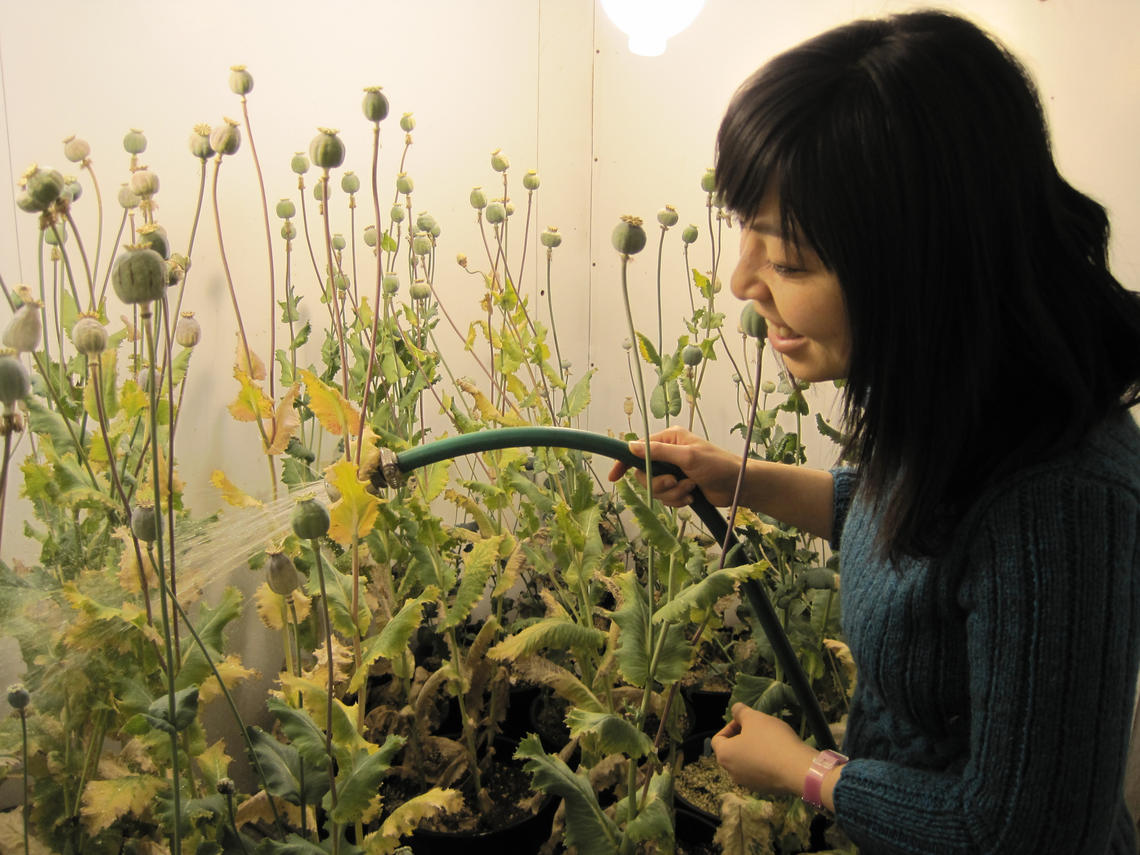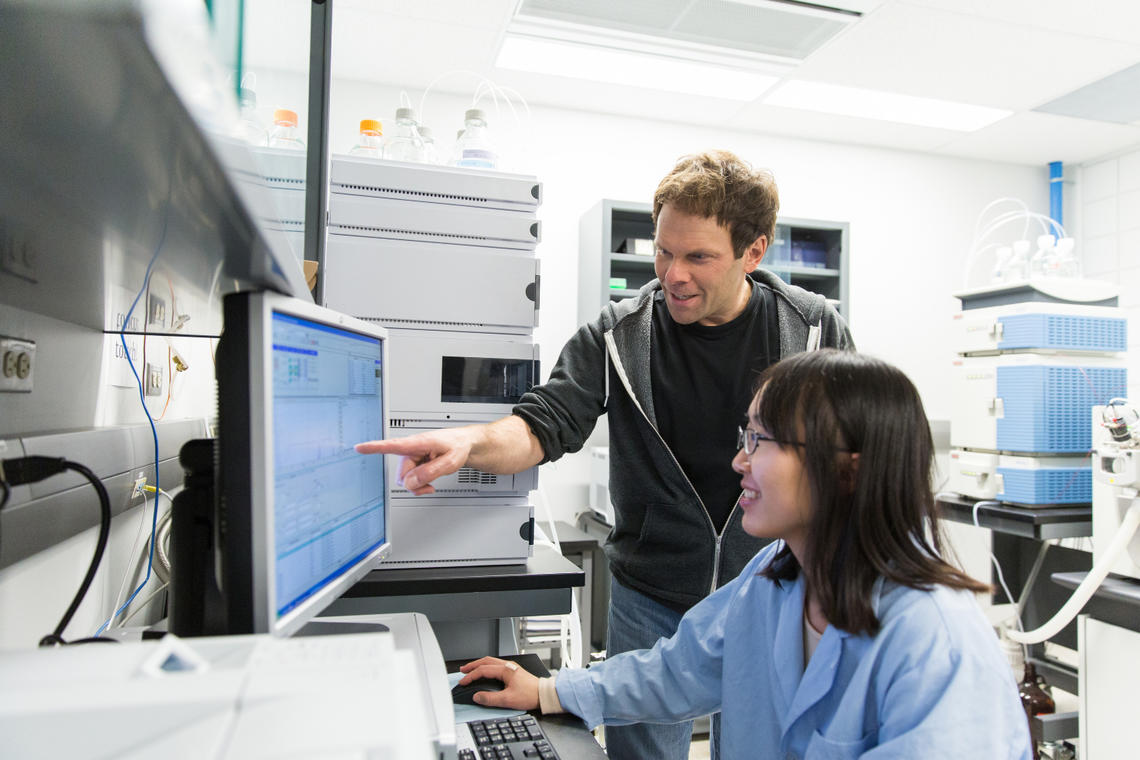
Thuy Dang was the lead author on the recent study published in Nature Chemical Biology.
Dec. 11, 2014

Thuy Dang was the lead author on the recent study published in Nature Chemical Biology.
After only four years of intensive research, scientists from the University of Calgary have identified a pathway of genes in opium poppies that underlies the synthesis of noscapine — a promising cancer-fighting agent and a cough suppressant used in many European countries.
Researchers Peter Facchini, recent PhD graduate Thuy Dang, and postdoctoral fellow Xue Chen identified 10 of the 11 dedicated steps encoded by a cluster of genes that lead to noscapine biosynthesis. Their work, published this week in Nature Chemical Biology, adds to knowledge of how the opium poppy makes the compound noscapine.
“Basically what we did here was to find not only one needle in the haystack, but 10,” says Facchini, professor of biological sciences in the Faculty of Science and an internationally recognized expert on opium poppy biochemistry. “When we started this project in 2009 we knew virtually nothing about the synthesis of noscapine in opium poppy, and now we’ve published the entire pathway. That’s quite remarkable.”
Facchini has been working for more than 22 years on the plant and the identification of the genes that make opium poppies different from closely-related species. He says the new findings demonstrate that the opium poppy is doing things in a way that the researchers did not expect. “In the pathway to noscapine, the plant is functioning like a sophisticated chemist, using complex methods to produce a number of different compounds. While we don’t know why opium poppy creates noscapine, we now know how it makes it.”

Peter Facchini and postdoctoral fellow Xue Chen were co-authors of the recent study.
Riley Brandt, University of Calgary
What is noscapine?
The opium poppy is one of humankind’s first domesticated plants, adds Facchini. It is most widely known as the source for the narcotic analgesics morphine and codeine, but it also produces noscapine. Poppy plants bred for the industrial production of commercial opiates are high in the compounds needed to make those painkillers, but are not designed for the commercial production of noscapine. There has been much research interest for many years in noscapine as a promising new anticancer drug.
Next steps
A detailed biochemical understanding of the noscapine pathway will enhance plant-breeding efforts that could enable pharmaceutical companies to create varieties of opium poppy that produce only noscapine. Alternatively, the availability of all the plant genes required to make noscapine will allow reconstruction of the pathway in microbes, which can be used as for commercial production. A spinoff company, Epimeron Inc, has been created to commercialize this and related technologies emerging from the Facchini lab.
Funding for the research was provided by Genome Canada, Genome Alberta, the Government of Alberta, and the Canada Foundation for Innovation. Thuy Dang was the recipient of the Alberta Ingenuity Technology Futures and University of Calgary Eyes High graduate scholarships. Peter Facchini held the Canada Research Chair in Plant Metabolic Processes Biotechnology.